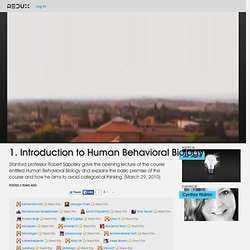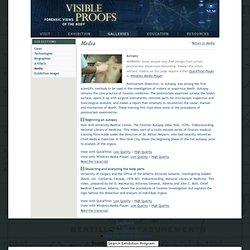

Lucifer Khamael
Academic Earth. Scientists unveil tools for rewriting the code of life. MIT and Harvard researchers have developed technologies that could be used to rewrite the genetic code of a living cell, allowing them to make large-scale edits to the cell’s genome.

Such technology could enable scientists to design cells that build proteins not found in nature, or engineer bacteria that are resistant to any type of viral infection. The technology, described in the July 15 issue of Science, can overwrite specific DNA sequences throughout the genome, similar to the find-and-replace function in word-processing programs. Using this approach, the researchers can make hundreds of targeted edits to the genome of E. coli, apparently without disrupting the cells’ function. “We did get some skepticism from biologists early on,” says Peter Carr, senior research staff at MIT’s Lincoln Laboratory (and formerly of the MIT Media Lab), who is one of the paper’s lead authors. DNA consists of long strings of “letters” that code for specific amino acids. ‘Plug and play’ 1. Introduction to Human Behavioral Biology Video. Log in Get Smart Cynthia Yildirim 1.

Introduction to Human Behavioral Biology Stanford professor Robert Sapolsky gave the opening lecture of the course entitled Human Behavioral Biology and explains the basic premise of the course and how he aims to avoid categorical thinking. Posted 3 years ago bethstratton22 liked this George Clark liked this Mohammad Abdelkhalek liked this Alicia Fitzpatrick liked this Tyler Terrell liked this Amara Vogt liked this Iliya Dgidgi liked this btay13 liked this bktoppers liked this efriede13 liked this Norazma Azmi liked this Mrorangev liked this poopscoop liked this jenniferdeane1665 liked this katherineland4 liked this kilaj128 liked this Janet Bloem liked this bulahula liked this LAHansen liked this Mycroft liked this dubnero liked this jamandagarcia liked this mcanallycarol03 liked this MP Oddity liked this.
Neonflames. - RichardDawkins.net. America's #1 completely independent news and politics source. Speech Accent Archive. Welcome - The Rosetta Project. Library of Congress Home. Cell Cycle & Cytokinesis - BioChemWeb.org.
Cell Cycle Regulation and the Control of Cell Proliferation (Cell Growth + Cell Division) Cell Cycle Research - General resource with links to relevant recent literature, news and job listings.

(Ion Channel Media Group) Cell Division - Undergraduate-level lectures on cell division. (Cell Biology Lectures, Mark Hill, University of New South Wales, Australia) The Eukaryotic Cell Cycle and Cancer - Introduction to the eukaryotic cell cycle as it relates to the genetics of cancer. (Phillip McClean, North Dakota State University) (Just above Beginner's Level) ICRF FACS Laboratory Cell Cycle Analysis - Methods for cell cycle analysis using flow cytometry. (FACS Laboratory, Imperial Cancer Research Fund, UK) The Interactive Fly: Evolutionarily Conserved Pathways (Society for Developmental Biology).
See also the Apoptosis, Cell Senescence and Signal Transduction pages. Mitosis, Meiosis and the Mechanics of Cell Division See also the Cytoskeleton, Cell Motility and Motors page. ThinkProgress. Global Warming and Climate Change skepticism examined. The Story of Mankind. Visible Proofs: Forensic Views of the Body: Galleries: Media: Autopsy. WARNING: Some people may find images from actual postmortem dissections disturbing.

Viewer discretion advised. Videos on this page require either QuickTime Player or Windows Media Player. Postmortem dissection, or autopsy, was among the first scientific methods to be used in the investigation of violent or suspicious death. Autopsy remains the core practice of forensic medicine. The postmortem examiner surveys the body's surface, opens it up with surgical instruments, removes parts for microscopic inspection and toxicological analysis, and makes a report that attempts to reconstruct the cause, manner and mechanism of death. Beginning an autopsy New York University Medical Center, The Forensic Autopsy (New York, 1978). View with QuickTime: Low Quality | High Quality View with Windows Media Player: Low Quality | High QualityRead the transcript.
Film Making. Linguistics. Science. Online Courses & Tools.